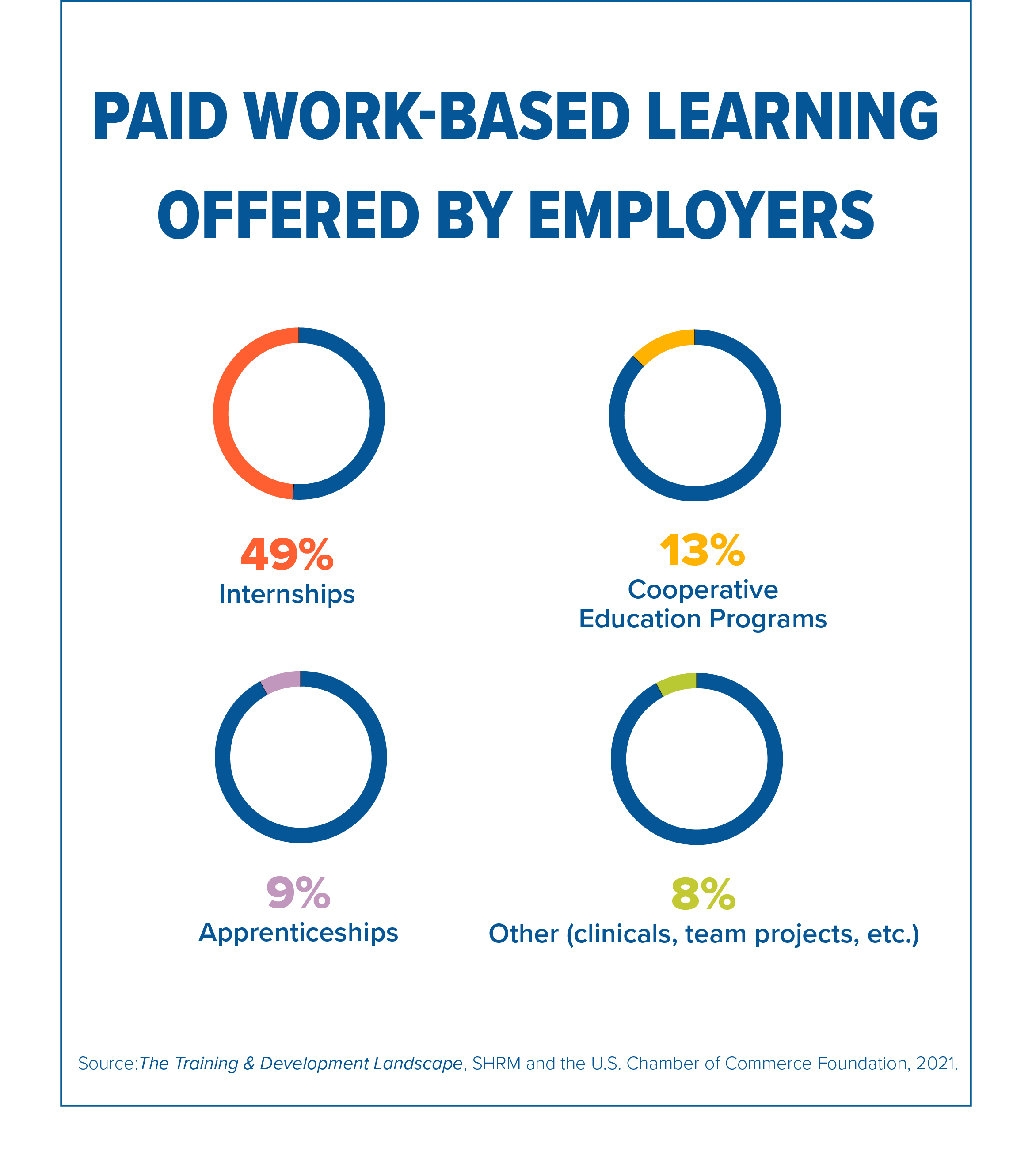Employers are more likely to train new or newly promoted employees than to upskill current employees, according to recent research from the Society for Human Resource Management (SHRM) and the U.S. Chamber of Commerce Foundation.
Often, the training brings new workers up to speed in their new industry. Some industries are required to offer this kind of training—61 percent of those in health care and social assistance said they must do so for certain jobs—but return on investment is the main reason employers see the value in skill-based training.
A midsize employer in the construction industry, for example, told researchers that the technical industry expertise required for the work it does makes it hard to find people with the right skill set, so it is creating its own internal training academy to prepare employees for key positions within the company.
HR professionals also said skill-based training directly addresses skills gaps (62 percent) and changing business needs (59 percent), and it improves employee retention (58 percent).
"Employers are recognizing the clear positive impact that skill-based training can bring to both their workforces and the bottom line," said SHRM researcher Kerri Nelson. "From leveraging this training to build an internal talent pipeline to allowing businesses to flexibly adapt to changing business needs, employers in our survey show that innovating may not be as difficult as most people may think. Investing in these areas now might help organizations save on costs in the long run."
[Related SHRM article: Report: Employers Turn to Partnerships to Develop Employees' Skills]
And many organizations are earmarking money for skill-based training in 2021: 60 percent of respondents said their organization will leave their budget untouched, and 20 percent plan to increase it. Only 6 percent are decreasing the funds. The remainder didn't have a training budget and do not have one in 2021.
Other findings from the report, The Training & Development Landscape: Exploring Employer Investment, Challenges and Innovation in Talent Development include the following:
- 94 percent of organizations offer some form of skill-based training, but only 31 percent offer all four types discussed in the survey: initial skill training, job-maintenance training, employee development and upskilling.
- 73 percent said their employer provides job shadowing, job rotation and similar training to prepare employees to perform their current job. This initial training tends to be aimed at newly hired employees and those promoted or transferred to different roles.
One unidentified midsize employer in the real estate industry created a manager-training program for the new college graduates it hires who have one to two years of work experience. The new employees spend a year working with different groups, then are assigned to a department and moved to a different region of the country to further their education and growth within the industry. - 66 percent offer job-maintenance training, such as teaching employees about new products and services or new technology the organization is introducing.
A small employer in the professional, scientific and technical services industry created an internal technology council made up of high-level employees who oversee emerging technologies and professional practices in training and development. Employees are given paid training time each month, along with a mentor and structured one-on-one meetings to discuss training goals. - 65 percent offer formal mentoring, coaching, leadership and professional development programs to enhance career-related skills.
A large employer in the information industry has a "returnship" program for women who have been out of the technology field for a while to prepare them for their return to the workforce. - 52 percent provide upskilling such as certification programs, apprenticeships, educational courses and cross-functional training.
A small employer in the wholesale trade industry created an annual cross-training program. Employees may choose areas of the company they are interested in learning about and attend 30- to 45-minute sessions taught by employees responsible for a given area.
[SHRM members-only how-to-guide: How to Address the Skills Gap]
Paid Work-Based Training
Forty percent of employers surveyed don't offer any type of paid work-based training—internships, cooperative education programs, apprenticeships or programs such as clinics and team projects—to students or potential employees.
When this type of training is used, it tends to be favored by certain industries. Apprenticeships, for example, are more likely found in construction, utilities, agriculture and mining, where they often are used as a recruitment tool. Only 9 percent of employers said they offer apprenticeships.
Internships, offered by 49 percent of respondents, are more often found at professional scientific and technical services industries and in the information, finance, insurance and real estate fields.

Other key findings:
- 41 percent of respondents said they don't have the budget for paid work-based training.
- 32 percent said they don't have the time to implement paid work-based training.
They also see the need for public-private leadership to encourage employer collaboration in skill-based training and development, paid work-based learning such as internships and apprenticeships, and talent recruitment.
An organization run by AI is not a futuristic concept. Such technology is already a part of many workplaces and will continue to shape the labor market and HR. Here's how employers and employees can successfully manage generative AI and other AI-powered systems.




